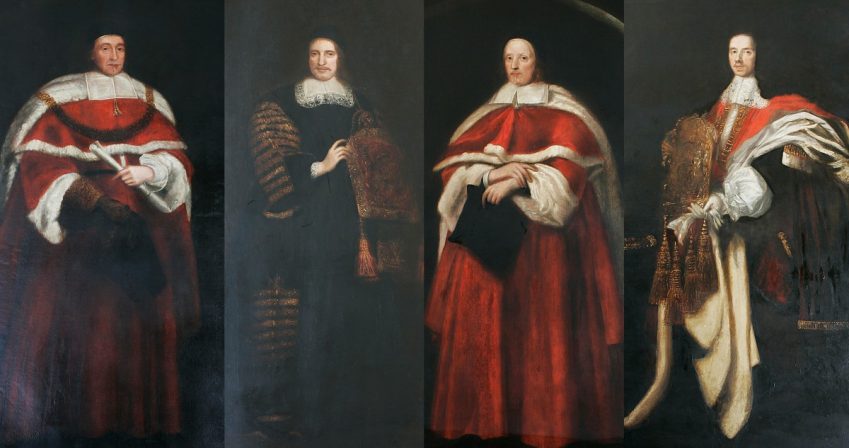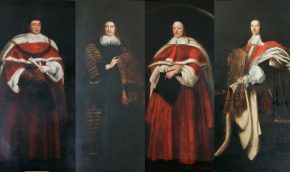Extract from
The Inner Temple: A Community of Communities
by Tom Shields QC, Master of the Pictures until 2017
A comparison of the catalogues of the Inn’s collection of portraits made in 1915 and 1982 reveals the substantial damage suffered during the Second World War. Over 150 paintings were lost. Fortunately the Inn still retains a large collection of portraits of its famous, favourite and most successful members. Sitters include monarchs, numerous Lord Chancellors (a full house in fact), Lord Chief Justices and holders of every rank of judicial office, including the first lady High Court Judge, Dame Elizabeth Lane. Fearless advocacy is represented by Marshall Hall and the arts by A P Herbert, the author of Misleading Cases. However, in contrast to those of the great and the good, there is the fine portrait of John Herbert by Carlo Maratta. Herbert was admitted in 1664 and was described by Walpole in his Anecdotes of Painting as ‘a great virtuoso who was called the rough diamond’.
Also of particular interest are the portraits of the four so-called fire judges, Sir John Vaughan, Sir Orlando Bridgman, Sir Thomas Tyrrell and Sir Heneage Finch, which hang in the Hall Gallery. Following the devastation caused by the Great Fire of London in 1666, twenty-two of the chief judges of England were charged by the Court of Alderman of the City of London with resolving the numerous boundary and tenancy disputes which had arisen. Out of gratitude for their work the court commissioned Joseph Michael Wright to paint their individual portraits for £60 apiece. These portraits had a peripatetic existence within the Guildhall until in 1952 the court decided to present them to interested bodies or individuals. Hence their presence in the Inn’s collection.

